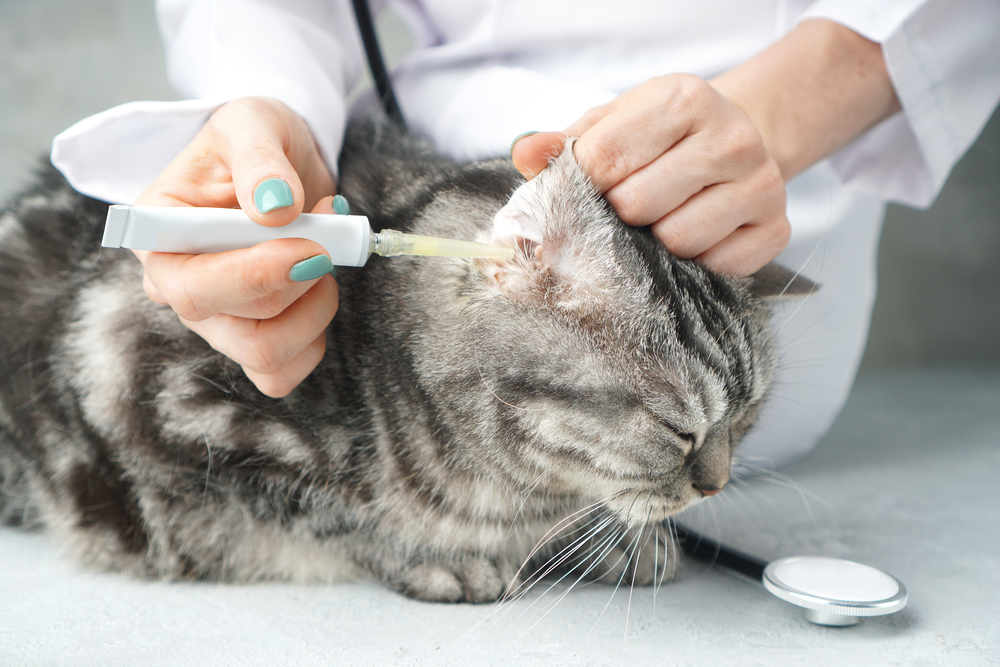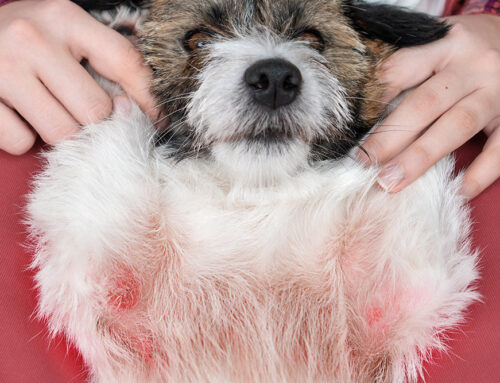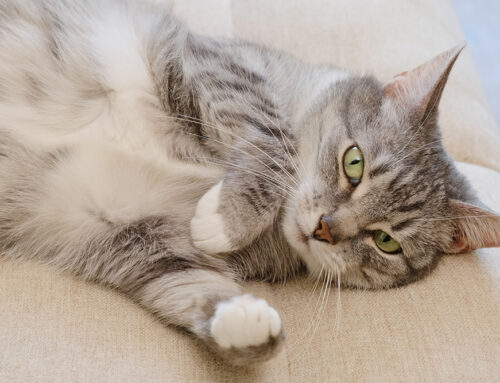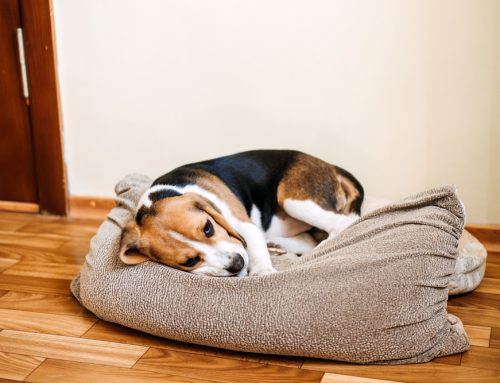Have you struggled to pop a pill down your angry cat’s throat or give your reluctant dog a syringe full of liquid medication? If so, you are not alone. Medicating pets can be challenging, even for veterinary professionals. While a Labrador retriever is likely to snarf down their pill without the need for a cheese or peanut butter disguise, it typically takes additional tactics to coerce a suspicious cat or dog to take their medication. Over the years, our Willow Wood Animal Hospital team has learned some tricks on how to medicate pets successfully. Check them out.
Preparation is key to successfully medicating pets
Before coming at your pet with a pill bottle or a tube of eye ointment, set up your medication station. Have all your necessary supplies, such as cotton balls, gauze, or a pill popper, ready to go before you restrain your pet. If you’re putting your pet’s oral pill in a treat, pill pocket, or meatball of canned food, do so out of sight. Your furry pal may catch on to what you’re doing if they see you stuff a pill in a hot dog chunk.
Practicing your restraint skills before medicating your pet is also vital to success, and techniques differ depending on species and breeds. Swaddling small dogs and cats in a large towel or blanket works well to keep them calm, plus it’s highly effective for restraining their body and head for medication administration. Large dogs will remain in place better if they are positioned next to a wall or in a corner. For most medications, administration works best when you are behind your pet. Coming directly at your pet’s face with a bottle of eye or ear medication can be seen as threatening.
How to give your pet oral medication
Most of the time, your pet’s medication will be in a solid, oral form, such as a pill, tablet, or capsule. While some of these medications can be broken into small pieces to hide more easily in a treat, or opened and sprinkled on food, many medications must remain intact when administered. Check with your veterinary professionals first before breaking tablets or opening capsules.
If your pet is willing, the quickest way to give them a pill is by opening their mouth and placing it at the back of their tongue. Hold your pet’s top jaw behind their canine teeth with your non-dominant hand, then quickly poke the pill to the back of their tongue with your dominant hand. Keep your pet’s muzzle closed until they swallow, which you can help convince them to do by rubbing their throat or blowing on their nose.
Some pets may be more difficult to work with, and you may need to use a “pill popper” or a strong-smelling treat. A pill popper is a handy tool that allows you to place a pill at the back of your pet’s tongue without sticking your fingers in their mouth. Or, you can disguise the medication in peanut butter, cheese, canned food, hot dogs, tuna, marshmallows, or your pet’s favorite treat. Begin by quickly giving your pet plain treats first, then slip in the medicated treat, and follow with a couple more plain treats. Your furry pal will never see their medication coming.
When giving your pet liquid medication, slide the syringe into the corner of their mouth and deep into the cheek pouch. Avoid sticking the syringe through their front teeth and shooting the medication at the back of their throat because this can cause your pet to choke.
How to administer eye medication to your pet
Many pets do not appreciate the administration of eye medication, since seeing a tube of ointment or a bottle of drops coming at their face can seem exceptionally threatening. Make the experience more pleasant by having plenty of treats on hand, and reward your pet for cooperating. Rather than trying to tilt your pet’s head back to administer drops or ointment, place the medication in the lower lid. To do so, steady your pet’s head with your non-dominant hand, using your thumb to hold down the lower lid, and your index finger to hold up the upper lid. Use your other hand to administer the eye medication into the pouch the lower lid creates when you hold the lid down. Gently massage the lower lid against the eye to help disperse the medication.
How to apply ear medication to your pet

Many pets do not like cold ear medication or cleansers dripped into their ear, but you can help make the procedure more pleasant. Start slowly and use plenty of treats to reward your furry pal. To begin, put a small amount of ear cleaning solution on a cotton ball or gauze square, then gently wipe out your pet’s ear. Remove all visible debris with cotton balls or gauze, then use a cotton swab to clean out the folds on the inside of the ear flap. Avoid pushing debris deeper into the ear, and always use an outward-scooping motion with the cotton swab. If you can’t see the tip of the swab, it’s too far in your pet’s ear. Next, apply the medication into your pet’s ear canal. Gently massage the base of the ear to work the medication into all the folds and crevices.
If you’re struggling to medicate your pet at home, contact our Willow Wood Animal Hospital team for assistance. We may be able to refill your pet’s prescription in a different formulation to make medicating them successful, or we can administer medication in our hospital.







Leave A Comment